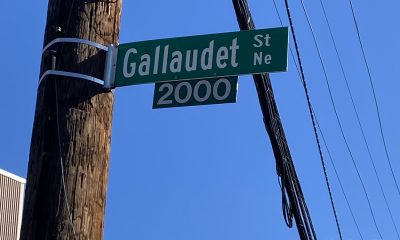a&e features
Chely Wright tours Christmas LP; plans new project for 2019
Out country singer/songwriter eschews holiday standards on ‘Santa’ record
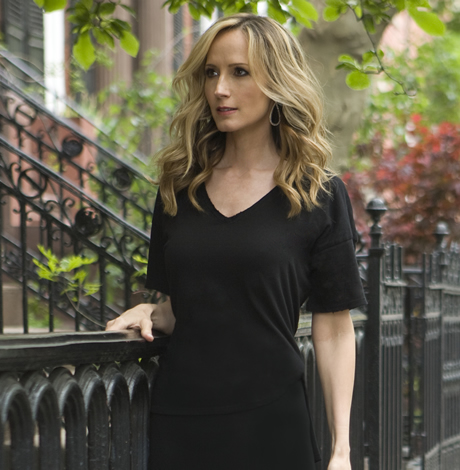

Chely Wright says she didn’t want to record holiday standards unless she could improve them. (Photo by Matthew Rodgers)
Chely Wright
City Winery
1350 Okie St., N.E.
$24 in advance; $28 at the door
Doors: 7 p.m.; show 8:30
For 25 years, Chely Wright has been in the country music spotlight and in 2010, became the first openly gay country singer. Since coming out, Wright has become an LGBT advocate while also recording, touring and embracing life as a mom and wife.
On Thursday, Dec. 20, Wright will be at City Winery promoting her new Christmas EP “Santa Will Find You.” Although she released her first album in 1994, it wasn’t until 1997 that she had her first big hit with “Shut Up and Drive.” In 1999, she rose to superstardom with the success of “Single White Female,” which has become her signature song. Her comments have been slightly edited for length.
WASHINGTON BLADE: What can fans expect from your Christmas show?
CHELY WRIGHT: Well they can expect new holiday music. Whenever you have new music out, one of the tricky things when doing shows is you wanna give people a taste of the new music but they also wanna hear the hits and the things they know you for. As a live performer, you kinda wanna do everything that’s new but you also want your audience to feel engaged and hold onto things that feel known to them during the show. So we’ll be doing the entire new EP and what I’ve been doing over the past couple years is what I call the “Story and Song Tour,” which is basically me running my mouth for almost two hours telling stories about how songs were written, recorded or certain memories about the road or a particular time in my career. I hope the audiences enjoy it because I enjoy it. I’ve been doing this job for 25 years putting records out and longer before I had records out. For me if I can get an audience that wants to go with me on the journey with me for 90 minutes or two hours of how I ended up here today doing what I’m doing, that’s a thrill for me and so far fans have been amenable to it.
BLADE: What inspired you to release a Christmas project?
WRIGHT: I think it’s kind of an understood that any country artist that has a career that spans a decade or two kinda has to make a holiday record. It’s kind of a prerequisite and I’ve been asked about it years ago when I was on major labels and I considered it and kinda wanted to but didn’t want to do it just to do it. I wanted to have a reason to it. Over the years I’ve written a couple of Christmas songs that were recorded by other artists but I just never had done a recording on them aside from the work tape the day I did the songs. It just seemed like this was time. I had a couple of songs, one that the Indigo Girls recorded, Mindy Smith recorded and Mindy and I had written one for her holiday record which was a great holiday record years ago. So it just felt right. I knew I had a couple of songs under my belt and my goal was if I could write three good original holiday tunes to add to that canon, that I’d be good to go. I talked it over with Jeremy Lister and Dustin Ransom the guys I worked with to produce this record and we just thought it was the best idea to make Christmas music so we did.
BLADE: Why did you chose to do an EP instead of a full album? Any reasons for not doing any traditional songs?
WRIGHT: What we decided to do was make a record together and then we wanted to do kind of an artist record, regular studio stuff. I don’t know which one of us brought it up, but the idea got tossed out there “Let’s do an EP of both!” Let’s do Christmas music and studio music and the reason I chose not to do covers is because unless you can record something better than it’s ever been done, it’s really hard for me to wrap my mind around that. No one is gonna call me the greatest singer of all time — we save those monikers for the Alison Krausses, the Lee Ann Womacks, the Trisha Yearwoods, the Martina McBrides —but what I do think I bring to the table that is unique is I write songs. So to me, if I can’t record “Oh Holy Night” better than anyone else has ever done it, well you can’t get me to touch it with a 10-foot pole. I love Christmas standards, it makes sense to me why people record Christmas covers. It’s warm, it’s fuzzy. No one is ever going to pan your record for not having good material. For me as a songwriter, I can’t imagine why I wouldn’t do that.
BLADE: “It Really Is a Wonderful Life” has already become a bit of a Christmas classic, It’s been recorded by The Indigo Girls and Mindy Smith as well. What inspired you to write it and why didn’t you release it first?
WRIGHT: I had gone through a breakup in 2005 and I had moved. I was closeted at the time. It’s not like I could go out to dinner with friends and pour my heart out that I was going through a break up. But my best friend Chuck knew and I was there in my house in East Nashville and Chuck said, I think it was on Christmas Eve day, “Why don’t you write something and send it out to your fans tonight. A little work tape or something. Why don’t you write them a new song?” and I did and I sent it out and I was glad I did my little bit of homework. I always feel better with what I’m struggling with when I write a new song. I sent it out and that was it. Then Mindy Smith was making her holiday record the next year and heard the work tape and said “I’m gonna cut that” then a couple years later The Indigo Girls cut it and so it just didn’t seem like something I should record until now.
BLADE: How did Richard Marx become a part of this project?
WRIGHT: Richard and I have been very close friends for 20-plus years. He and I have collaborated together, we’ve recorded together, we’ve written together, we’ve been important in each others lives for along time. I knew I was making a holiday record and only had three songs to write. I had two titles that I, specifically for sentimental reasons, I wanted to write them with Richard. I wanted him to be on this record for personal reasons. I texted him and said “I got 2 song titles, “Happy New Years Old Friend” and “Christmas Isn’t Christmas Time” do you want to write them with me for this record” and he wrote back “Duh” and that’s how it came about. We enjoy singing together. You know, I take a little offense when any man I’m singing with sings higher than I do and that’s what you get with Richard and Vince Gill (laughs).
BLADE: How did you come to choose the vintage family photo for the cover?
WRIGHT: I was thinking about cover art, you know it’s important, especially for a holiday record because it’s forever. Hopefully people latch onto the music 10 years after I’ve made this record, hopefully someone will come to it and discover it as new. I wanted something was representative of what holidays have always meant for me. I knew pretty well I wanted to call the EP “Santa Will Find You” and for me, because when I was a kid, I really did have a worry that Santa wouldn’t know where I’d be Christmas Eve and Christmas morning. It was a genuine real concern. I found oddly enough my boys have the same concern. It’s like a universal right of passage to wonder if Santa can find you. I started going through family photos and found one my Aunt Char had written Christmas ’73 on top and that was so perfect. It’s my brother and sister and I and our two cousins. My cousin David sadly passed when we were kids, I was 11 when he died. I asked my Aunt Char if she cared if I used the photo and she said “I’d love it! David was a star!” Then I had my friend, world-renowned picture book illustrator, Marla Frazee hand draw the title. So if you wonder what font or text, it’s a piece of artwork and I’m so happy she took the time to do it.
BLADE: Now that you’re a wife and mother, does Christmas take on a whole new meaning?
WRIGHT: You know I was telling my wife the other day that my mom always got Christmas right for us kids. It was always so special and what Lauren said back to me was, “That must be why you work so hard at Christmas for our boys.” I really try to make it magical because you know, you really don’t have a lot of time … to make it magical with kids. Right now they’re 5, so we have the biggest Christmas tree we’ve ever had and my boys are Jewish by the way, did I mention that? We’re raising them as Jewish so we celebrate Hanukkah and Christmas. I feel like it’s one of the magical parts of childhood and I just want to get it right and want them to remember the wonder of the season and of course we talk what it means to be Jewish during the holidays and Christian during the holidays but mostly it’s just Santa and magic and candy and presents. Heck, why not? I remember one Christmas Eve we were driving home from our aunt’s house and I looked up in the sky and saw a red light trailing through the sky. I said “Dad get home fast! It’s Rudolph, they came early!” I remember listening for Santa and sneaking downstairs and trying to see if I could see Santa leaving presents. I also have really great memories of my siblings too. We would somehow put aside our wresting, fighting and bickering and it was us trying to stay up and see if we could see Santa or hear reindeer on the roof.
BLADE: Next year, your debut album, “Woman In The Moon,” turns 25. Any plans to celebrate 25 years in the music business?
WRIGHT: Really good question. I think new music is a great way to celebrate it. A new holiday record and in early 2019 we’ll release another EP that is just studio music. When we went into make the holiday music we also made another EP of regular studio music so that’ll be out.
BLADE: Will it be similar to your last album, “I Am The Rain”?
WRIGHT: It’s hard for me because it’s all me so it all feels like me. I do think it is different. The people who have heard it and who know my body of work say “It’s kind of a tip of the hat to your commercial music,” so that’s kind of exciting. The EP is going to be called “Revival.”
BLADE: You used PledgeMusic to help fund this EP and your next EP as well. You’ve had great success with going the fundraising route. Do you feel this is the way the music business is going for independent artists?
WRIGHT: You know it’s ever changing the business model of putting music out. Had you asked me five years ago that I’d be doing an EP I would probably have said no way. I think it’s important as an artist to continue to be creative and have my voice be heard as a songwriter and as an artist. You have to be nimble and pay attention to the way consumers are consuming music and the way artists are introducing work into the market place. Crowd funding is a thing now. When I did my Kickstarter, I think I was one of the first commercial artists, former major label artists, to have done a Kickstarter and a lot of people are doing it now. Pay attention to the young people, they know what they’re doing. I tend to see what they’re doing and try to do it my own way. Years ago I thought it was just asking for money, but it’s not. It’s pre-selling your record, that’s it. It reengages your fan base. I’ve always been known to have a real supportive, loyal fan base and it seems like a smart way to stay engaged with them. In two years you and I will be talking about the new way people are doing things and hopefully I’ll have enough smarts or foresight to keep changing and as I said earlier, be nimble on how to push music out into the market place.
BLADE: What’s the key to your staying power?
WRIGHT: I think the key is you have to be technologically open minded and creatively opened minded. I think the key to my staying power is, I’ve often said this — if you want to be a writer, you gotta write. I think the key is what I’m about to do after I hang up this phone — change my guitar strings and sit down and play my guitar and make stuff up. It’s hard to keep making records if you’re not creating new work and you gotta do that. Saddle time is what I call that so I’m about to get back on the saddle.
BLADE: Since coming out in 2010 and releasing your book and documentary, do you still get people coming up to you saying your story has helped or inspired them?
WRIGHT: Every day. I either get a DM or a Facebook message or somebody stops me in an airport. It still shocks me how many people heard my story or saw my story or read my story. It’s always pretty humbling to hear how it impacted their journey or their child’s journey. It’s been the biggest blessing of my life to come out the way I did and still causing ripples. Again, it’s humbling and I’m grateful for it.

Chely Wright says she looks at how young people are consuming music when she makes decisions about how to release new projects. (Photo by Matthew Rodgers)
a&e features
Visit Cambridge, a ‘beautiful secret’ on Maryland’s Eastern Shore
New organization promotes town’s welcoming vibe, LGBTQ inclusion
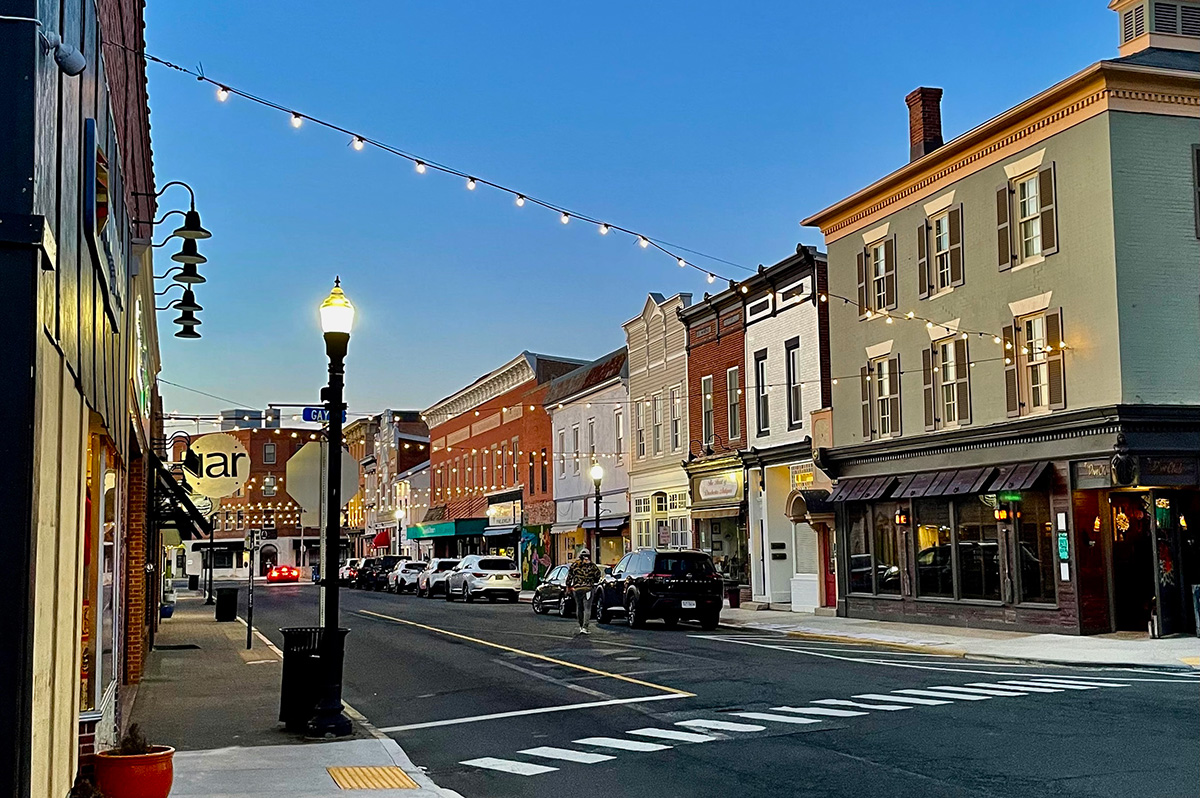
CAMBRIDGE, Md. — Driving through this scenic, historic town on Maryland’s Eastern Shore, you’ll be charmed by streets lined with unique shops, restaurants, and beautifully restored Victorian homes. You’ll also be struck by the number of LGBTQ Pride flags flying throughout the town.
The flags are a reassuring signal that everyone is welcome here, despite the town’s location in ruby red Dorchester County, which voted for Donald Trump over Kamala Harris by a lopsided margin. But don’t let that deter you from visiting. A new organization, Proudly Cambridge, is holding its debut Pride event this weekend, touting the town’s welcoming, inclusive culture.
“We stumbled on a beautiful secret and we wanted to help get the word out,” said James Lumalcuri of the effort to create Proudly Cambridge.
The organization celebrates diversity, enhances public spaces, and seeks to uplift all that Cambridge has to share, according to its mission statement, under the tagline “You Belong Here.”
The group has so far held informal movie nights and a picnic and garden party; the launch party is June 28 at the Cambridge Yacht Club, which will feature a Pride celebration and tea dance. The event’s 75 tickets sold out quickly and proceeds benefit DoCo Pride.
“Tickets went faster than we imagined and we’re bummed we can’t welcome everyone who wanted to come,” Lumalcuri said, adding that organizers plan to make “Cheers on the Choptank” an annual event with added capacity next year.
One of the group’s first projects was to distribute free Pride flags to anyone who requested one and the result is a visually striking display of a large number of flags flying all over town. Up next: Proudly Cambridge plans to roll out a program offering affirming businesses rainbow crab stickers to show their inclusiveness and LGBTQ support. The group also wants to engage with potential visitors and homebuyers.
“We want to spread the word outside of Cambridge — in D.C. and Baltimore — who don’t know about Cambridge,” Lumalcuri said. “We want them to come and know we are a safe haven. You can exist here and feel comfortable and supported by neighbors in a way that we didn’t anticipate when we moved here.”

Lumalcuri, 53, a federal government employee, and his husband, Lou Cardenas, 62, a Realtor, purchased a Victorian house in Cambridge in 2021 and embarked on an extensive renovation. The couple also owns a home in Adams Morgan in D.C.
“We saw the opportunity here and wanted to share it with others,” Cardenas said. “There’s lots of housing inventory in the $300-400,000 range … we’re not here to gentrify people out of town because a lot of these homes are just empty and need to be fixed up and we’re happy to be a part of that.”
Lumalcuri was talking with friends one Sunday last year at the gazebo (affectionately known as the “gayzebo” by locals) at the Yacht Club and the idea for Proudly Cambridge was born. The founding board members are Lumalcuri, Corey van Vlymen, Brian Orjuela, Lauren Mross, and Caleb Holland. The group is currently working toward forming a 501(c)3.
“We need visibility and support for those who need it,” Mross said. “We started making lists of what we wanted to do and the five of us ran with it. We started meeting weekly and solidified what we wanted to do.”
Mross, 50, a brand strategist and web designer, moved to Cambridge from Atlanta with her wife three years ago. They knew they wanted to be near the water and farther north and began researching their options when they discovered Cambridge.
“I had not heard of Cambridge but the location seemed perfect,” she said. “I pointed on a map and said this is where we’re going to move.”
The couple packed up, bought a camper trailer and parked it in different campsites but kept coming back to Cambridge.
“I didn’t know how right it was until we moved here,” she said. “It’s the most welcoming place … there’s an energy vortex here – how did so many cool, progressive people end up in one place?”
Corey van Vlymen and his husband live in D.C. and were looking for a second home. They considered Lost River, W.Va., but decided they preferred to be on the water.
“We looked at a map on both sides of the bay and came to Cambridge on a Saturday and bought a house that day,” said van Vlymen, 39, a senior scientist at Booz Allen Hamilton. They’ve owned in Cambridge for two years.
They were drawn to Cambridge due to its location on the water, the affordable housing inventory, and its proximity to D.C.; it’s about an hour and 20 minutes away.
Now, through the work of Proudly Cambridge, they hope to highlight the town’s many attributes to residents and visitors alike.
“Something we all agree on is there’s a perception problem for Cambridge and a lack of awareness,” van Vlymen said. “If you tell someone you’re going to Cambridge, chances are they think, ‘England or Massachusetts?’”
He cited the affordability and the opportunity to save older, historic homes as a big draw for buyers.
“It’s all about celebrating all the things that make Cambridge great,” Mross added. “Our monthly social events are joyful and celebratory.” A recent game night drew about 70 people.
She noted that the goal is not to gentrify the town and push longtime residents out, but to uplift all the people who are already there while welcoming new visitors and future residents.
They also noted that Proudly Cambridge does not seek to supplant existing Pride-focused organizations. Dorchester County Pride organizes countywide Pride events and Delmarva Pride was held in nearby Easton two weeks ago.
“We celebrate all diversity but are gay powered and gay led,” Mross noted.
To learn more about Proudly Cambridge, visit the group on Facebook and Instagram.
What to see and do
Cambridge, located 13 miles up the Choptank River from the Chesapeake Bay, has a population of roughly 15,000. It was settled in 1684 and named for the English university town in 1686. It is home to the Harriet Tubman Museum, mural, and monument. Its proximity to the Blackwater National Wildlife Refuge makes it a popular stop for birders, drawn to more than 27,000 acres of marshland dubbed “the Everglades of the north.”
The refuge is walkable, bikeable, and driveable, making it an accessible attraction for all. There are kayaking and biking tours through Blackwater Adventures (blackwateradventuresmd.com).
Back in town, take a stroll along the water and through historic downtown and admire the architecture. Take in the striking Harriet Tubman mural (424 Race St.). Shop in the many local boutiques, and don’t miss the gay-owned Shorelife Home and Gifts (421 Race St.), filled with stylish coastal décor items.
Stop for breakfast or lunch at Black Water Bakery (429 Race St.), which offers a full compliment of coffee drinks along with a build-your-own mimosa bar and a full menu of creative cocktails.
The Cambridge Yacht Club (1 Mill St.) is always bustling but you need to be a member to get in. Snapper’s on the water is temporarily closed for renovations. RaR Brewing (rarbrewing.com) is popular for craft beers served in an 80-year-old former pool hall and bowling alley. The menu offers burgers, wings, and other bar fare.
For dinner or wine, don’t miss the fantastic Vintage 414 (414 Race St.), which offers lunch, dinner, wine tasting events, specialty foods, and a large selection of wines. The homemade cheddar crackers, inventive flatbreads, and creative desserts (citrus olive oil cake, carrot cake trifle) were a hit on a recent visit.
Also nearby is Ava’s (305 High St.), a regional chain offering outstanding Italian dishes, pizzas, and more.
For something off the beaten path, visit Emily’s Produce (22143 Church Creek Rd.) for its nursery, produce, and prepared meals.
“Ten minutes into the sticks there’s a place called Emily’s Produce, where you can pay $5 and walk through a field and pick sunflowers, blueberries, you can feed the goats … and they have great food,” van Vlymen said.
As for accommodations, there’s the Hyatt Regency Chesapeake Bay (100 Heron Blvd. at Route 50), a resort complex with golf course, spa, and marina. Otherwise, check out Airbnb and VRBO for short-term rentals closer to downtown.
Its proximity to D.C. and Baltimore makes Cambridge an ideal weekend getaway. The large LGBTQ population is welcoming and they are happy to talk up their town and show you around.
“There’s a closeness among the neighbors that I wasn’t feeling in D.C.,” Lumalcuri said. “We look after each other.”
a&e features
James Baldwin bio shows how much of his life is revealed in his work
‘A Love Story’ is first major book on acclaimed author’s life in 30 years

‘Baldwin: A Love Story’
By Nicholas Boggs
c.2025, FSG
$35/704 pages
“Baldwin: A Love Story” is a sympathetic biography, the first major one in 30 years, of acclaimed Black gay writer James Baldwin. Drawing on Baldwin’s fiction, essays, and letters, Nicolas Boggs, a white writer who rediscovered and co-edited a new edition of a long-lost Baldwin book, explores Baldwin’s life and work through focusing on his lovers, mentors, and inspirations.
The book begins with a quick look at Baldwin’s childhood in Harlem, and his difficult relationship with his religious, angry stepfather. Baldwin’s experience with Orilla Miller, a white teacher who encouraged the boy’s writing and took him to plays and movies, even against his father’s wishes, helped shape his life and tempered his feelings toward white people. When Baldwin later joined a church and became a child preacher, though, he felt conflicted between academic success and religious demands, even denouncing Miller at one point. In a fascinating late essay, Baldwin also described his teenage sexual relationship with a mobster, who showed him off in public.
Baldwin’s romantic life was complicated, as he preferred men who were not outwardly gay. Indeed, many would marry women and have children while also involved with Baldwin. Still, they would often remain friends and enabled Baldwin’s work. Lucien Happersberger, who met Baldwin while both were living in Paris, sent him to a Swiss village, where he wrote his first novel, “Go Tell It on the Mountain,” as well as an essay, “Stranger in the Village,” about the oddness of being the first Black person many villagers had ever seen. Baldwin met Turkish actor Engin Cezzar in New York at the Actors’ Studio; Baldwin later spent time in Istanbul with Cezzar and his wife, finishing “Another Country” and directing a controversial play about Turkish prisoners that depicted sexuality and gender.
Baldwin collaborated with French artist Yoran Cazac on a children’s book, which later vanished. Boggs writes of his excitement about coming across this book while a student at Yale and how he later interviewed Cazac and his wife while also republishing the book. Baldwin also had many tumultuous sexual relationships with young men whom he tried to mentor and shape, most of which led to drama and despair.
The book carefully examines Baldwin’s development as a writer. “Go Tell It on the Mountain” draws heavily on his early life, giving subtle signs of the main character John’s sexuality, while “Giovanni’s Room” bravely and openly shows a homosexual relationship, highly controversial at the time. “If Beale Street Could Talk” features a woman as its main character and narrator, the first time Baldwin wrote fully through a woman’s perspective. His essays feel deeply personal, even if they do not reveal everything; Lucian is the unnamed visiting friend in one who the police briefly detained along with Baldwin. He found New York too distracting to write, spending his time there with friends and family or on business. He was close friends with modernist painter Beauford Delaney, also gay, who helped Baldwin see that a Black man could thrive as an artist. Delaney would later move to France, staying near Baldwin’s home.
An epilogue has Boggs writing about encountering Baldwin’s work as one of the few white students in a majority-Black school. It helpfully reminds us that Baldwin connects to all who feel different, no matter their race, sexuality, gender, or class. A well-written, easy-flowing biography, with many excerpts from Baldwin’s writing, it shows how much of his life is revealed in his work. Let’s hope it encourages reading the work, either again or for the first time.
a&e features
Looking back at 50 years of Pride in D.C
Washington Blade’s unique archives chronicle highs, lows of our movement
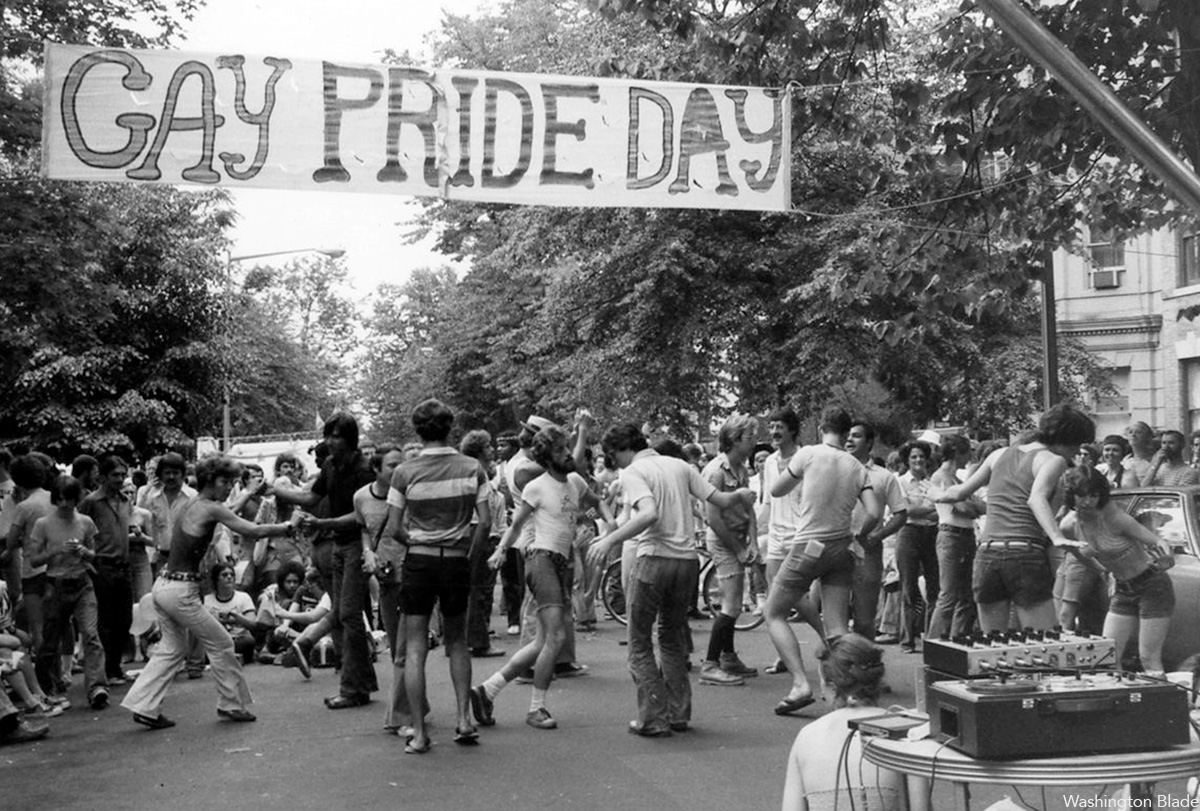
To celebrate the 50th anniversary of LGBTQ Pride in Washington, D.C., the Washington Blade team combed our archives and put together a glossy magazine showcasing five decades of celebrations in the city. Below is a sampling of images from the magazine but be sure to find a print copy starting this week.
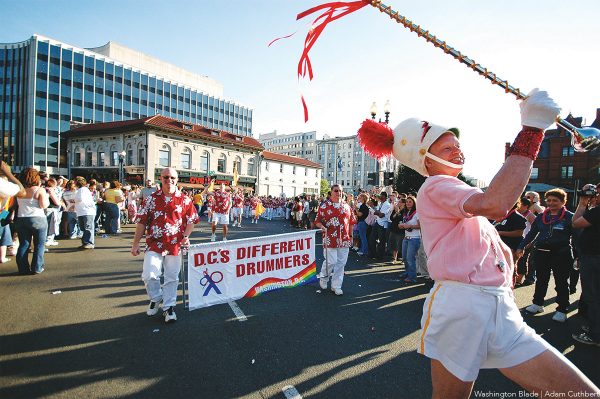
The magazine is being distributed now and is complimentary. You can find copies at LGBTQ bars and restaurants across the city. Or visit the Blade booth at the Pride festival on June 7 and 8 where we will distribute copies.
Thank you to our advertisers and sponsors, whose support has enabled us to distribute the magazine free of charge. And thanks to our dedicated team at the Blade, especially Photo Editor Michael Key, who spent many hours searching the archives for the best images, many of which are unique to the Blade and cannot be found elsewhere. And thanks to our dynamic production team of Meaghan Juba, who designed the magazine, and Phil Rockstroh who managed the process. Stephen Rutgers and Brian Pitts handled sales and marketing and staff writers Lou Chibbaro Jr., Christopher Kane, Michael K. Lavers, Joe Reberkenny along with freelancer and former Blade staffer Joey DiGuglielmo wrote the essays.

The magazine represents more than 50 years of hard work by countless reporters, editors, advertising sales reps, photographers, and other media professionals who have brought you the Washington Blade since 1969.
We hope you enjoy the magazine and keep it as a reminder of all the many ups and downs our local LGBTQ community has experienced over the past 50 years.
I hope you will consider supporting our vital mission by becoming a Blade member today. At a time when reliable, accurate LGBTQ news is more essential than ever, your contribution helps make it possible. With a monthly gift starting at just $7, you’ll ensure that the Blade remains a trusted, free resource for the community — now and for years to come. Click here to help fund LGBTQ journalism.
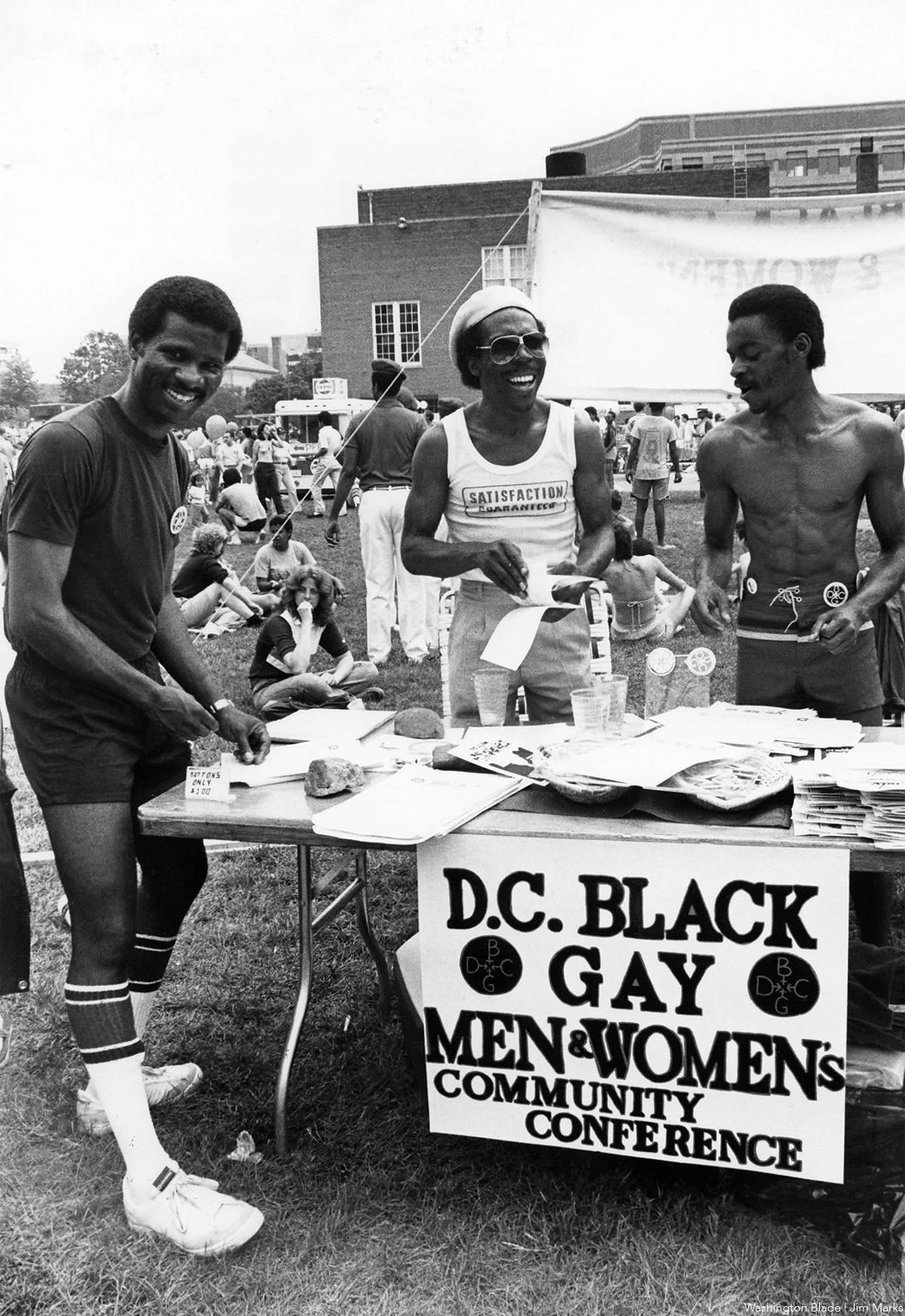
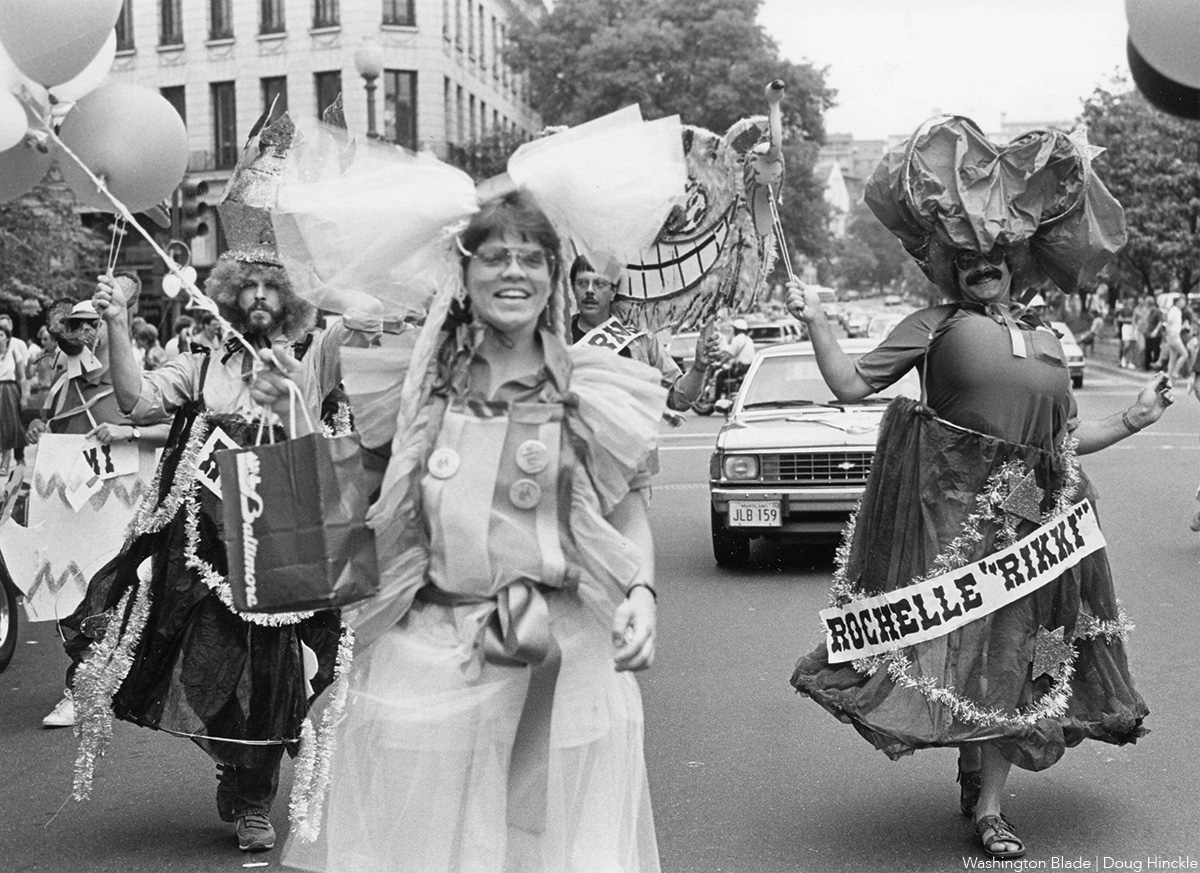
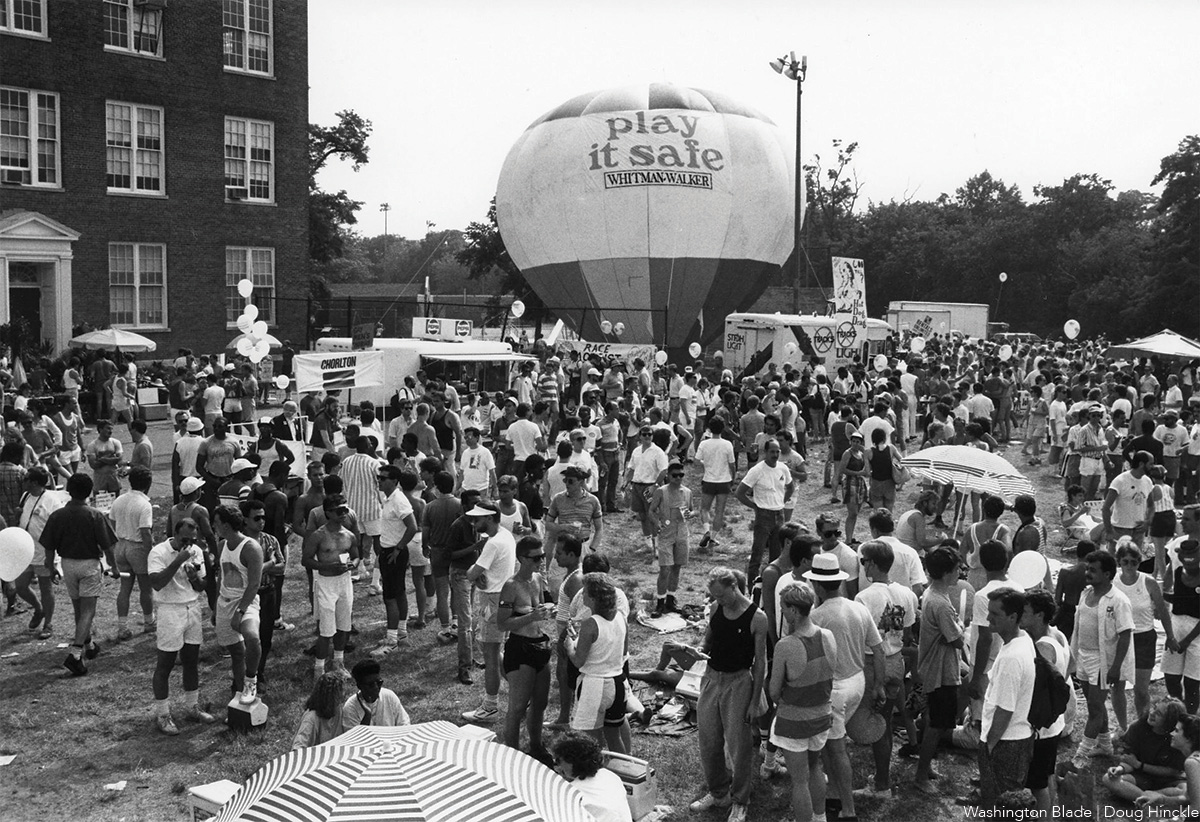
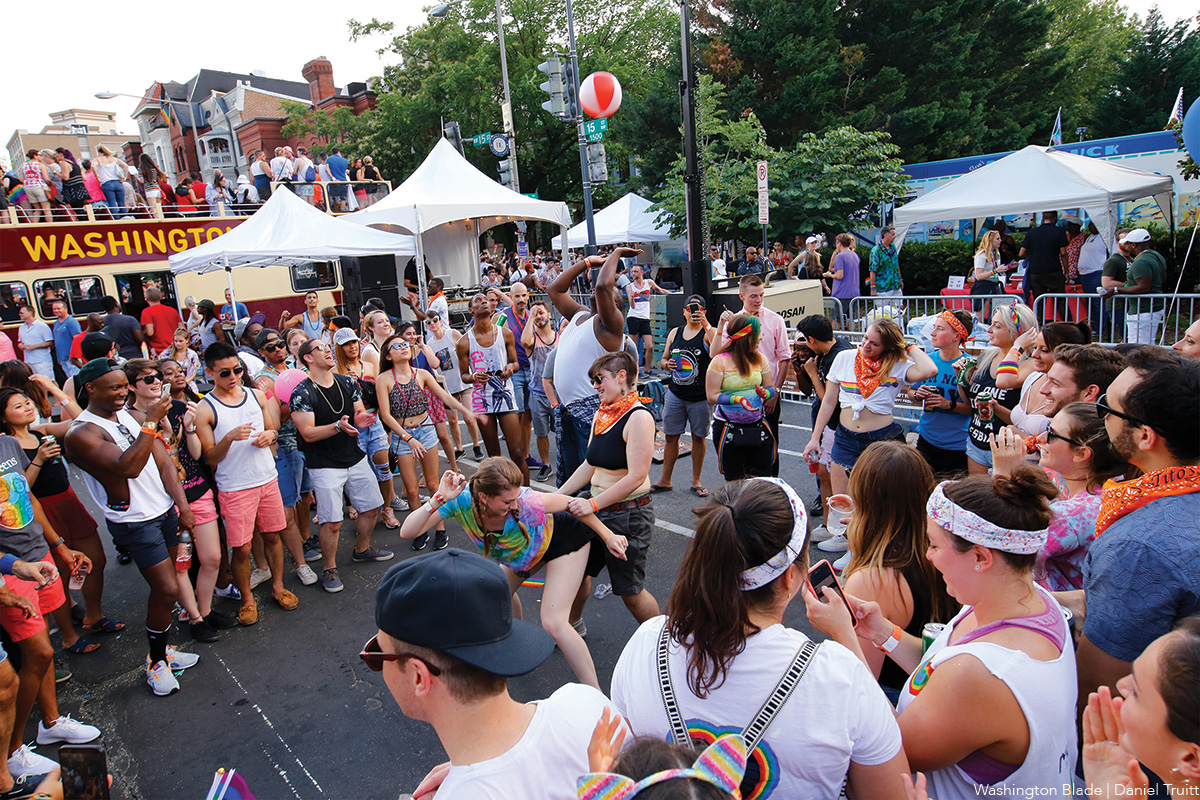
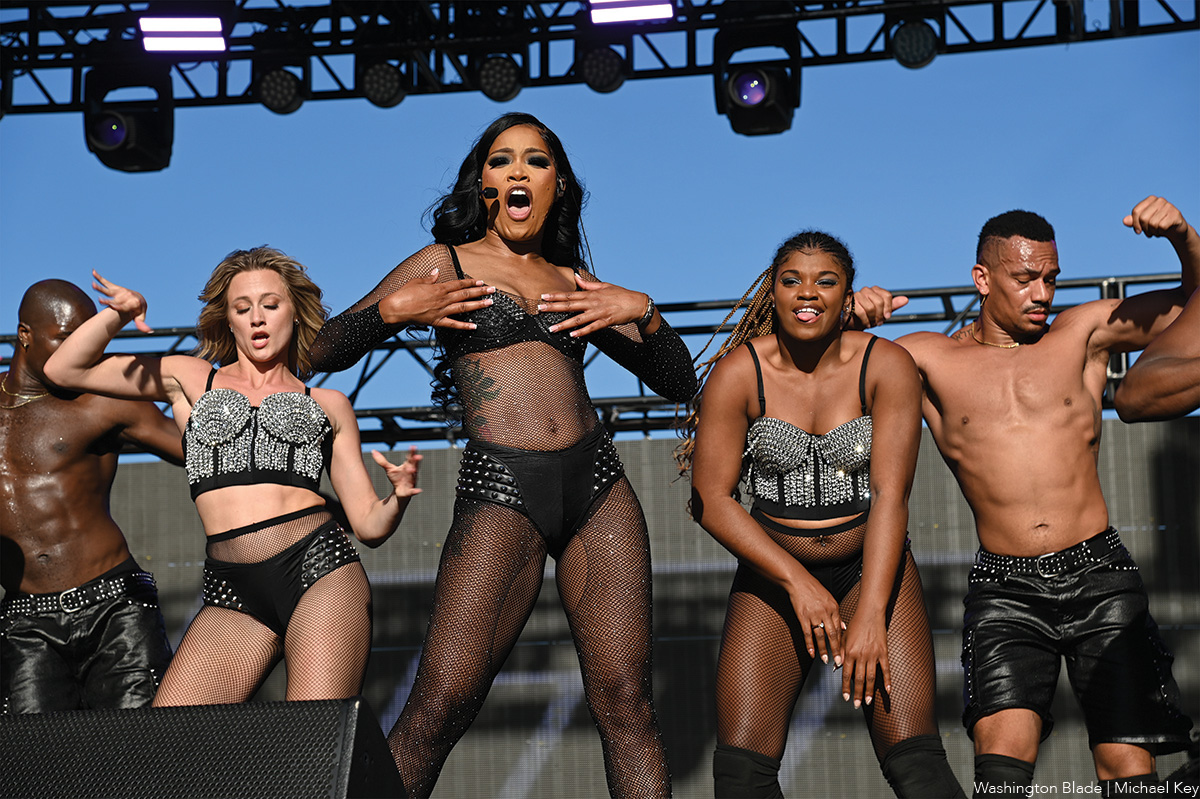
-

 District of Columbia5 days ago
District of Columbia5 days agoActivists protest outside Hungarian Embassy in DC
-

 Virginia4 days ago
Virginia4 days agoSpanberger touts equality, reproductive rights in Arlington
-

 Books4 days ago
Books4 days agoTwo new books on dining out LGBTQ-style
-
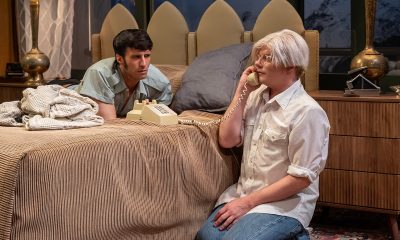
 Theater4 days ago
Theater4 days ago‘Andy Warhol in Iran’ a charming look at intersection of art, politics



